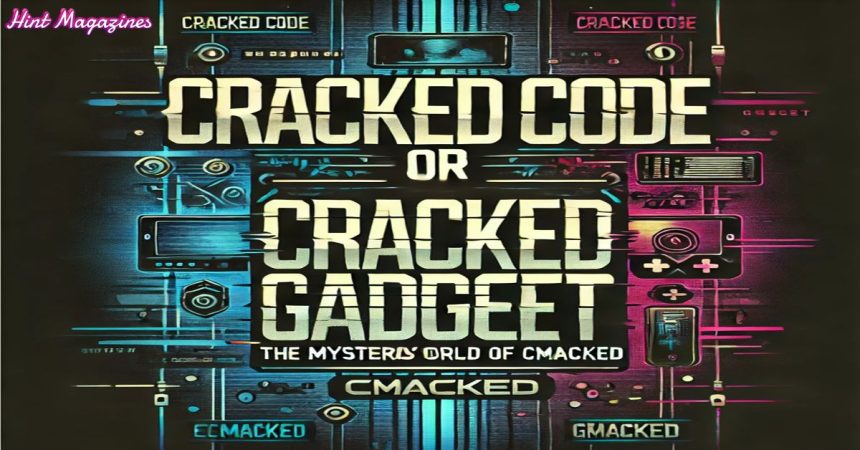Welcome to the world of ‘cracked’—words that have caught the interest of tech and non-tech geeks—and the reasons why. As the digital landscape evolves so fast today, we must know what tech jargon and phenomena are to figure out everything. In this blog post, I’ll attempt to peel back the veil on the meaning of “smacked” and what its application to our digital lives means.
From software solutions to digital dilemmas, “cmacked” represents diverse scenarios. This post will dissect what “cmacked” entails, potential benefits, and challenges. Whether you’re a tech-savvy individual looking to expand your knowledge or a beginner eager to grasp the basics, this guide is tailored for you.
What Exactly is cmacked?
It is often used in tech circles to refer to Software or devices that have been modified or tampered with, typically to remove restrictions or add functionalities. These processes could involve changing the code, circumventing security procedures, or activating functions intended by the designers. Of course, it all sounds very appealing, but this begs that one understands the ups and downs.
For many, “cmacked” represents an opportunity to access premium features without paying for them. However, such a practice has both ethical and legal concerns. In addition to the above, it violates intellectual property rights, and users are at risk of security vulnerabilities. Therefore, carefully considering this territory’s pros and cons is crucial before jumping in.
Understanding “cmacked” requires a nuanced approach. You don’t want only free access and more capabilities—you want to understand the implications. As we go on, we’ll find where “cmacked” fits in the more prominent tech world and how it affects everyone.
The Appeal of cmacked Software
Why do people turn to “cracked” Software and devices? Of course, the primary draw has to be the cost savings. Content features usually only accessible with a subscription or single purchase payment can be highly tempting for people on the knife’s edge for a budget. Also, ‘cracked’ editions of the usually popular apps provide customizations not supplied in the official releases.
The appeal is more than financial, however.
However, the appeal is more than just financial. Tech enthusiasts are drawn to the challenge of modifying Software and pushing the boundaries of what’s possible. For them, “cmacked” represents an opportunity to innovate and experiment. It’s a form of digital rebellion where they can break free from the limitations of developers and manufacturers.
Despite these attractions, it’s crucial to remember that “cmacked” Software comes with significant risks. Security vulnerabilities, lack of support, and potential legal consequences exist. In the following sections, we will explore these challenges in more detail and offer concrete advice on how to meet them.
Ethical Considerations in the World cmacked
The ethics of using “cmacked” Software are hotly debated. On the one hand, proponents argue that it’s a form of digital freedom as Users should have the right to modify and customize their Software as they want. Of course, buying a product goes as far as using what you buy.
On the other hand, critics contend that “cmacked” Software undermines the hard work of developers and creators. Users steal intellectual property by bypassing restrictions or accessing paid features for free. This not only impacts the financial well-being of developers but also stifles innovation by discouraging fair compensation.
Ultimately, using “cmacked” Software is personal and influenced by individual values and beliefs. But there’s also more to it. Legitimate means are a means to support developers so that they continue to create and improve digital tools and services.
Legal Implications and Risks
Beyond the ethical considerations, clear legal risks are associated with using “cmacked” Software. Unauthorized modifications often violate the terms of service agreements set by developers and manufacturers. Such activities can lead to fines, lawsuits, or account suspensions.
Furthermore, “cmacked” Software is frequently distributed through unofficial channels, increasing the risk of downloading malicious code. Users can be exposed unknowingly to malware, spyware or other security threats exposed to the user’s devices. Indeed, these risks affect not only an individual but can obscure certain information and negatively impact connected networks.
Given these dangers, it’s essential to approach “cmacked” Software with caution. The lure of getting free or better features is strong, but when it comes to the effects, they are not farmland. At the end of this post, we’ll also cover safer alternatives and strategies to ensure you get the most out of tech without endangering your security or legality.
Alternatives to cmacked Software
There are legitimate alternatives if you’re intrigued by the benefits of “cmacked” Software but wary of the risks. Many software developers offer free trials or discounts, allowing users to experience premium features without unauthorized modifications. Furthermore, open-source Software will enable you to access powerful tools and applications free of cost.
A path you could take is looking at a freemium model where you have some basic features, and then people can choose to pay for the extra features. This approach supports developers while giving users flexibility and choice. When you invest in legitimate software, you protect your devices while supporting the growth and sustainability of the tech industry.
Ultimately, it’s all about finding a middle ground between your demand for advanced features and a dedication to proper and legal practices. By exploring these alternatives, you can enjoy a rich digital experience without the drawbacks of “cracked” Software.
The Role of Community in Navigating Cmacked
Community plays a vital role for those who choose to explore the “cracked” world. Forums, online groups, and other social media platforms allow users to share experiences, troubleshoot problems, and share tips. Through collaboration and learning, these communities encourage users to make informed decisions.
But it’s important to engage with these communities responsibly. Know the rules and take them seriously on any platform that you use. Be transparent about your intentions. Don’t promote illegal activities or distribute unlicensed content. Instead, focus on exchanging knowledge and skills that enhance your understanding of technology and its possibilities.
By participating in these communities, you can gain valuable insights and support while navigating the complexities of “cracked” Software. The goal is to learn as much as you can about tech responsibly and ethically.
Balancing Innovation and Compliance
Innovation vs. compliance is a challenge of the digital age. Cmacked Software exemplifies this tension, where users desire to go off the beaten track while respecting legal and ethical lines. Finding this balance requires a nuanced understanding of technology, creativity, and responsibility.
To achieve this balance:
- Start by staying informed about the latest Software and tech policy developments.
- Learn about your digital tool and service rights and responsibilities.
- Get access to leaders in your field and explore new trends before they become big.
But with active knowledge-seeking and building a culture of ethical innovation, you can reap the benefits of technology and help control risk. This approach improves your digital experience and creates a more sustainable, equitable tech ecosystem.
Future Directions for Cracked and Beyond
The future of “cmacked” Software is uncertain as technological advancements and regulatory changes continue to shape the digital landscape. However, one thing is clear: the demand for flexible, customizable Software will persist. These dynamics of development and use of the Web are evolving, and developers and users have to figure out new ways to collaborate and create.
This means that users still have new ways to customize and optimize. Proactively seek legitimate tools and resources that align with your needs and values. You’ve got to stay open to new ideas and be willing to do new things within ethical and legal boundaries.
Protecting intellectual property and the security of software is a challenge that developers face in creating the Software that users need. By creating transparency, discussion, and collaboration, developers can fill that innovation-to-compliance gap and pave the way to a more open and changeable digital future.
Conclusion
In conclusion, the world of “cmacked” Software offers opportunities and challenges. It provides tech enthusiasts and curious users a way to dive into new enterprises and discover new digital boundaries. At the same time, taking this realm with caution, mindfulness, and responsibility is essential.
Understanding the ins and outs of ‘cracked’ software will help you enjoy a quality tech experience, provided you do not violate your ethics or compromise security. Connect with the communities, learn, and try to find that equilibrium between innovation and compliance.
However, the secret to thriving in the digital age is to be informed, adaptable, and ethical. That means you can use technology to improve your life in ways that weren’t possible before and to help drive a more just and sustainable tech ecosystem.





